Week Beginning 22.6.20 Reception Weekly Overview
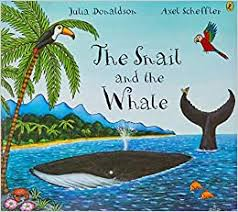
This week’s learning is based on the book
‘The Snail and the Whale’ by Julia Donaldson
One tiny snail longs to see the world and hitches a lift on the tail of a whale. Together they go on an amazing journey, past icebergs and volcanoes, sharks and penguins, and the little snail feels so small in the vastness of the world. But when disaster strikes and the whale is beached in a bay, it’s the tiny snail who saves the day.
If you don’t have a copy of the story, don’t worry, you can watch it here: https://youtu.be/hheolVGZVvs
There is also a wonderful animated short film of the story on BBC iPlayer. https://www.bbc.co.uk/iplayer/episode/m000cslw/the-snail-and-the-whale
Choose one or two things from each area to do over the week.
Personal, Social and Emotional Development (PSED)
- How can we care for snails when we find them?
- Who helps who in the story?
- How do you feel when you help people?
- What could you do at home to be ‘helpful’?
- Even though the snail is small, he helps to save the whale. Think about your abilities. Is there anything that you thought you couldn’t do, but you managed to when you tried?
Communication and Language
- The whale shows the snail around the exotic island. When you next go out, can you describe all the things you can see and hear all around you?
- What do you know already about snails? Tell your mum or dad everything you know
- Describe how it feels to move round and round in a spiral.
- The human activity makes the whale swim too close to the shore. Do you think that this could really happen? How can you find out? What might we be able to do to stop it from happening again?
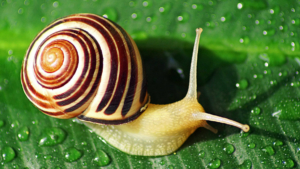
Physical Development
- Watching how snails move- can you move like them?
- What do we need to do after handling snail?
- Exploring slime- Make your own slime. https://www.thekitchn.com/how-to-make-3-ingredient-slime-without-borax-245904
- Build your own snail shell to wear.
- Do some snail and whale dancing with: https://www.bbc.co.uk/programmes/p0440f1f
- Explore spinning different objects- what object spins the longest?
- Dance daily, using the free Go-Noodle website- https://www.gonoodle.com/ The class absolutely love this website!
- Visit the ‘Cosmic Kids Yoga’ channel on Youtube It has some fantastic exercises and activities. See if you can find and copy the ‘whale pose’ on the channel. Have your parents take a picture of you performing the whale pose or any other poses you find on the Cosmic Kids Yoga channel and upload the image to tapestry.
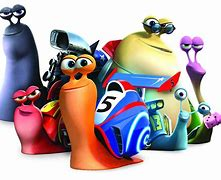
Maths
- How many creatures can you see on each page? How many creatures are shown in the whole book?
- Collect and count snails in your garden/ on your walk.
- Snail racing – learn about ordinal numbers. 1st, 2nd, 3rd etc
- Draw maps so that the whale doesn’t get lost again.
- Complete the White Rose Daily Lessons based on the book ‘The Snail and the Whale’. (Summer Term Week 6) https://whiterosemaths.com/homelearning/early-years/
Literacy
- Look at pictures of snails and whales and think of words or sentences to describe them.
- There is a lot of rhyming in the story. Can you find the rhyming words? Can you find other words which rhyme with them?
- At the end of the story, the snail tells his friends all about his adventure. Can you write what he might have said to them?
- Write your own story about two different creatures, who go on a big adventure together.
- Write a postcard from the whale and the snail, telling their friends about where they have been and what they have seen.
- Use PVA glue and glitter or glitter glue pens, to make secret snail trail messages on black card or paper.
- Write about where you would like to travel to, on the back of a whale.
Phonics- It is highly important that your child practises their letter sounds and tricky words and applies them through a reading and writing activity daily. Reading will help improve their vocabulary and a child’s academic success depends upon the ability to read and write and so this should be a priority.
Please do the daily Department for Education (DFE) ‘Letters and Sounds’ live phonics lesson.
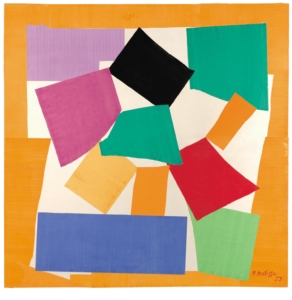
The Snail 1953 Henri Matisse
Expressive Arts and Design
- Draw your own seaside picture. Can you draw a picture of what lives under the sea?
- Create your own spiral paintings.
- Decorate empty snail shells if you manage to find some!
- Make snail finger puppets.
- Make trails with chalk outside.
- Learn about the famous artist Henri Matisse and his collage, ‘The Snail’ here: https://youtu.be/hy4DUpsC22c and on the Tate Modern webpage here: https://www.tate.org.uk/kids/explore/kids-view/meet-matisse
- Make your own snail picture collage like Henri Matisse. https://www.tate.org.uk/kids/make/cut-paste/collage-matisse-snail
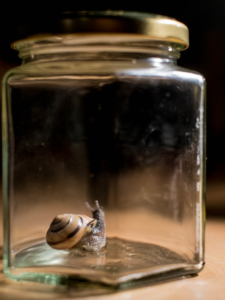
Understanding the World
- Snail and slug hunt- collect and put in glass jar for observation. How does the snail move? Can you find the snails’ mouths?
- Learn about whales here: https://youtu.be/I9qlhNU1ATE – draw or write some facts to show what you have learnt.
- Watch ‘Come Outside- Snails’. https://www.bing.com/videos/search?q=Come+Outside+snails&&view=detail&mid=B57D29AE7650B9C3CD80B57D29AE7650B9C3CD80&rvsmid=DD7B090E0E1D7C8276E3DD7B090E0E1D7C8276E3&FORM=VDRVRV
- Learn about snails here: https://www.youtube.com/watch?v=pLCtVGB1mFwRE
To show that RE is a special learning time, we always light a candle to mark the beginning of lesson and ask ‘Who is with us when we light the candle?’ and ‘Who do we learn about in our RE lesson?’
We then say the school’s Mission Prayer together.
Please see the separate RE blog for the whole school learning focus and choose one from the suggested activities. Thank you!
Ongoing Further Activities and Information
- Sing daily, using the BBC Schools Radio website- https://www.bbc.co.uk/teach/school-radio/eyfs-early-years/z6bgnrd Again, the class love this website and it will be very familiar to them! The class also really enjoy singing the following songs during special prayer time:https://www.youtube.com/watch?v=8fdk0oKMmfghttps://www.youtube.com/watch?v=Cc0QVWzCv9khttps://www.youtube.com/watch?v=DSpyKsPiUhs
- https://www.youtube.com/watch?v=yjh5Kh5Hxu8
- https://www.youtube.com/watch?v=QCN893hzueQ
- https://www.youtube.com/watch?v=DXDGE_lRI0E
Ongoing Maths Activities – try at least one a day
- Go on a walk and count how many rainbows or teddies you can see in the windows of different houses. Which road has the most?
- Counting objects within the house-This could be anything as simple as counting the cutlery in your drawer!
- Looking for shapes in the environment- Can you see the rectangle on the table? The square on the oven door? How many edges does the bookcase have? Can you name the 3D shape that your cereal box is?
- Using positional and directional language- Where is the teddy? On top, under, behind, in front of, next to, in between etc. Use directions to get from one room to another e.g. walk two steps forward, turn left…
- Capacity-Fill the bath and give them your child whichever containers you have at home (jugs, Tupperware). Encourage the language of full, nearly full, half full, nearly empty, empty. Will the water to fill this container fit into another container?
- Time- Create an ‘at home’ timetable together. What shall we do first? What shall do next? What shall we do at the end of the day? Begin to recognise o’ clock times on a clock.
- Money- Empty your purse or money box. Learn the names of the different coins. Use 1p coins to count and add with.
- Patterns- Use every day objects around the home to create patterns e.g. pen, fork, sock, pen, fork, sock. Can they continue and copy your pattern? Can they make their own pattern.
- Length and height- Find three objects from around the home. Can they order them from smallest to largest? Use your feet to measure the length of items in your home (e.g the sofa). How many feet long is it? Counting objects within the house. This could be anything as simple as counting the cutlery in your drawer!
- Addition using objects found within your home- If we have 5 spoons and 3 forks, how many do we have altogether? Include missing numbers e.g I have 5 buttons. How many more do I need to make 10?
- Subtraction using objects found within your home- If we have 7 biscuits and I eat 2 how many biscuits are left?
- Subitising (recognising how many without counting) the amount of objects in a set. How many candles are on the fireplace? How many plates are on the table? Etc
- Watch a Numberblocks episode each day at: BBC iplayer or CBeebies.
- Practise counting up to 20. This can be done through playing hide and seek, singing number songs, chanting, board games etc.
- Write out the digits 0 – 9.
- Sing Number songs to practice counting, reciting numbers in order, one more, one less using number songs: Five Little Ducks, Five Little Men, Ten Green Bottles
- Practise counting backwards from 20.
- Look for the numbers on the doors of houses. Do the numbers get bigger or smaller as you go up and down the street?
- Listen to a number song from the CBeebies website. After listening to them, watch again and sing along if you can. Talk about the maths you can see in the video clip.
- Look out of the window and count how many houses or buildings can be seen
- Explore weighing and measuring food on the kitchen scales. Ask, what happens as you place more on the scales?
Maths Websites
https://www.topmarks.co.uk/maths-games/5-7-years
https://matr.org/blog/fun-maths-games-activities-for-kids/
https://www.primarygames.com/math.php
https://www.bbc.co.uk/cbeebies/topics/numeracy
https://apps.mathlearningcenter.org/geoboard/
.
White Rose Maths has prepared a series of five maths lessons for each year group from Year R-8. They will be adding five more each week for the next few weeks. Every lesson comes with a short video showing you clearly and simply how to help your child to complete the activity successfully. Click on the link to find out more.
https://whiterosemaths.com/homelearning/
Independent writing
Parents, please encourage your child to write as often as you can, using their phonics and tricky word knowledge. Please take a close up picture of any writing they do and upload it to Tapestry. If they are forming their letters incorrectly, the wrong way around or hold their pencil the wrong way, please correct your child immediately. Please refer to the inside cover of their original home phonics book for the handwriting phrases, if you find yourself in this position.
Phonics
Please continue to practise all of Phase 2 and Phase 3 sounds and tricky words on a daily basis.
Phase 2 tricky and high frequency words
Read: is, it, in, at, and, the, to, no, go, I, on, a
Phase 3 tricky and high frequency words
Read: he, she, we, me, be, was, my, you, they, her, all, are
Write: the, to, no, go, I
For those children who know all of the above, please begin to teach the following words from Phase 4. (Consolidating phase)
Phase 4 tricky words
Read: said, so, have, like, some, come, were, there, little, one, do, when, out, what
Information about Phase 4 Phonics
During the summer term and only when the children are secure in Phase 2 and 3, Reception usually move over to the Phase 4 stage of Letters and Sounds. When children start, they will know a grapheme for each of the 42 phonemes. They will be able to blend phonemes to read CVC (consonant-vowel-consonant) words and segment in order to spell them.
Children will also have begun reading straightforward two-syllable words and simple captions, as well as reading and spelling some tricky words.
In Phase 4, no new graphemes are introduced. The main aim of this phase is to consolidate the children’s knowledge and to help them learn to read and spell words which have adjacent consonants, such as trap, string and milk.
If your child knows all of the Phase 2 and 3 sounds consistently and the high frequency and tricky words, then please begin to introduce your child to the Phase 4 online games and activities.
Important- Please be aware that if you go onto this phase before they are ready, it may cause your child to have issues with spelling later on in their school life.
The following websites are fantastic for practising phonics phases, word recognition and sentence reading.
https://www.teachyourmonstertoread.com
https://www.phonicsplay.co.uk/freeIndex.htm
http://www.familylearning.org.uk
https://www.spellingcity.com/spelling-games-vocabulary-games.html
Twinkl also have some great phonics and cross curricular resources and are also currently free if you follow these instructions:
Go to https://www.twinkl.co.uk/offer and enter the code: UKTWINKLHELPS
Phonics Play in particular is a fantastic resource for the actual teaching of the Letters and Sounds program. It is currently free to parents due to the Coronavirus situation.
Reading
As well as Oxford Owls, Harper Collins Publishers are now giving parents free access to their Big Cat e-books and activities, which are also organised according to book band colour.
Go to Collins Connect and click on the Teacher portal and enter:
Username: parents@harpercollins.co.uk
Password: Parents20!
and then click Login.
To login to Oxford Owl please continue using the school’s login.
Username:popepaul2020
Password:Ilovereading2020
You must put the detail into Class Login not the general login otherwise it will not work. Once logged in, you can go into the bookshelf. Select 2 books from your child’s book band colour and practise reading them every day. There are two activities to go with each book and parent tips at the end of the book. If you click on the parents section too, you should find even more books and resources.



Leave a Reply
Want to join the discussion?Feel free to contribute!